Alana Tyson interview: Large-scale fabric pieces
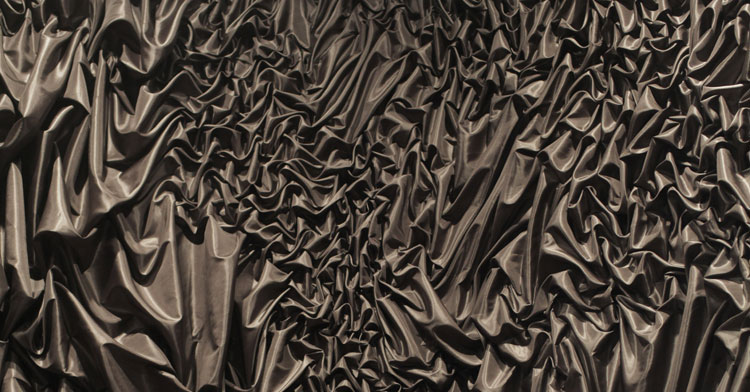
Alana Tyson currently lives in Wales, although she was born in Calgary, Canada. She graduated from the Alberta College of Art and Design in 2006, and then moved to the United Kingdom the following year.
Alana is currently Artist-in-Residence at Ruthin Craft Centre. This is where she created some of her best known installation work, including Interior, which opened on 22 February 2015.
In this interview she talks about bringing together unlikely combinations , as well as her addiction to Pinterest and the evolution of her work as an artist.
Sharing the quiet interior places
TextileArtist.org: What initially captured your imagination about textile art?
Alana Tyson: I love to make things with my hands, so this is one of my primary motivations for being an artist. Textile art incorporates so many diverse materials and methods. It is an inclusive world and I love that. I am drawn to textiles because of elements like materiality and repetition. I particularly enjoy cathartic activities like hand-embroidery and crochet.
What or who were your early influences and how has your life influenced your work?
My work is autobiographical and stems from personal experiences and events.
My manipulated fabric pieces are reminiscent of coffin lining, chocolate boxes, and visceral entrails of the body. These pieces give import to that which is normally hidden away, both literally as in the above references and as a metaphor for the soul. I was constantly told by mother as a child, “It’s what’s on the inside that counts.” She was referring to my playmates, but I took this further to my tiny constructed fantasy worlds, some in shoeboxes others as small as walnut shells.
Further than my childish fascination with all things miniature, I felt safe and was happy in these introspective interiors. Society today is becoming more and more obsessed with outer appearances. Unable to stay in my own tiny and private world, I have constructed large scale pieces that leave the realm of object and become an environment for the viewer, sharing the quiet interior places I have always found solace in.
I spent many long hot summers with my grandmother on the Canadian Prairies and she taught me to crochet when I was very young. She still makes amazing patchwork quilts out of scrap bits of fabric. Even now I see scraps in new quilts from clothes I wore as a child.
Her mother was also a quilter. As a wedding gift, I received a beautiful patchwork quilt that my great-grandmother had started before her death several years before – my great-aunt had a local quilting group finish it for me. It is one of my most treasured possessions and I use it nearly every day. I love my grandmother and great-grandmother’s quilting aesthetic. Their fabrics shouldn’t work together – the patterns and colours should clash terribly – but they don’t. They form a magical whole.
My work is much more pared down with lots of neutrals and often just a single material and technique, but I think this makes quite a nice metaphor for what I am trying to achieve with my art. I like dichotomies and having ideas or feelings that shouldn’t work together existing in the same piece. For example, something can be very beautiful but unsettling at the same time.
The joy and grief
What was your route to becoming an artist?
I studied painting at the Alberta College of Art and Design in Calgary, Canada. I loved it there and learned so much. In my final year I don’t think I picked up a paintbrush. My instructors encouraged me to explore and use whatever necessary to express my ideas.
When I moved to the United Kingdom, I had to idea how much I would miss the artistic community I had in Canada. It took me a while to establish myself, but luckily I feel I have finally found my place in Wales. I also love how geographically small the UK is. It makes it so much easier to access shows and events and there are a lot of exciting things happening in the arts.
What is your chosen medium and what are your techniques?
I like to use whatever medium or technique is going to best help me convey an idea. This can get extreme and lead me into different disciplines like video and ceramics. Last summer I took up traditional silhouette portrait cutting for an intervention called Shades by the Seaside. I was taking part in an arts festival called Llawn02 in the seaside holiday resort of Llandudno. Members of the public were able to visit me on the promenade, where I cut their silhouettes. At the same time, I led each sitter through the mental creation of a second portrait of an absent loved one. They were encouraged to pass their own portrait on to someone they would like to be remembered by. I was interested in both the joy and grief that can come with remembering an absent loved one.
For the large-scale fabric pieces, I stand at the front of my piece and use a curved needle to hand-stitch the lining material onto a backing fabric. My latest installation, Interior, took 140 meters of fabric! I calculate the size of the fabric needed and any additions like colour inserts before I begin as the pieces are sewn together first on a machine. Sometimes I intentionally give myself too little fabric as this forces tension in the work when I have to pull the fabric to make it fit.
More recently, I have started using crochet in my work. I was taught very young but had never used it in my artistic practice before this year. I have been working with size 10 unbleached crochet cotton. I just had a piece Alter Ego I in a show in Nottingham called Crafting Anatomies. I crocheted myself a ‘battle mask’ to give myself confidence and presented it as a video with only my eyes moving.
Since becoming Artist-in-Residence at Ruthin Craft Centre in North Wales, I have been working on a brand new series that combines finely crocheted forms and concrete castes. This is my first time working with concrete and I have found the possibilities really exciting, particularly when unexpectedly combined with the delicate crochet.
How would you describe your work and where do you think it fits within the sphere of contemporary art?
I would describe my work as coming from conceptual traditions but rooted in materials and craftsmanship. All of these elements are really important to me; I strongly object to any sort of art or craft hierarchy. I love working with textiles and I think that they open up so many possibilities for connecting with an audience conceptually. We are constantly in physical contact with cloth; it is intimately connected to our lives and I think that this can allow for really powerful associations.
A stew of ideas
Tell us a bit about your process and what environment you like to work in.
I feel like I have a stew of ideas swirling around in my subconscious. I like to go into the studio and have a play, often with one of the ideas I have been contemplating for a while. It will bubble to the surface and I will realise I have finally found the right way of expressing it. I find working in series very helpful for really investigating an idea thoroughly.
I like a quiet, clean studio with natural light. I have a studio at home but have loved the studio at Ruthin Craft Centre the past few months, particularly as I am not so susceptible to distractions there. One of the best bits about my studio at Ruthin is the lack of internet connection. I get so much more making done that I have decided to ban the internet from my home studio as well!
What currently inspires you and which other artists do you admire and why?
I am really inspired by installation art at the moment. Whilst at Ruthin Craft Centre, I have built a new installation, Interior, which is a spiral room that completely encloses the viewer. Every surface is covered in undulating fabric and there are further sound and kinetic elements. I love the idea that you can really transport or physically make an impact with art. Two artists I admire for this are Ernesto Neto and Tara Donovan. They take wonderfully simple forms and create immersive, lush pieces that are so much more than the sum of their parts.
I also really admire Susie MacMurray. I had the opportunity to meet her in her studio in Manchester recently. She spoke about the joy of being able to bounce off of the history of a space as she did with her site-specific installation Shell at Pallant House Gallery in Chichester. In the future, I would really like to explore working with a historic space like this and creating a site-specific installation.
Tell us about a piece of your work you have fond memories of and why.
I feel that Absent Series represents the beginning of my artistic practice. The series was about building a relationship with my great-grandmother, who I never met, through the repetitive act of stitching. She was an amazing woman; she attended university before WW1 and lived her life out farming on the Canadian prairies. I worked from a photograph of her and the woolen material I used was reflected in the coat she is wearing in the photo. A grouping of five pieces from this series toured the eastern United States with Fiberart International 2007. It was such an amazing experience being part of that show, to be exhibiting amongst such amazing artists was a huge honour. Absent Series was mentioned in a review of the show in the Surface Design Journal and was also bought by craft collectors, Jerome and Deena Kaplan.
Throw away unsuccessful works
How has your work developed since you began and how do you see it evolving in the future?
I have been working on the Interior series for nearly a decade now. Initially, the work was constrained to rectangular dimensions, a residue of my painting background. Just when I feel I have done all I can with this series, new ideas formulate – it has moved through organic shapes and the addition of different colours in a single piece. Now it has expanded into installation, incorporating an inflatable machine which makes the walls move in and out subtly, as well as a further sound element. I’m not sure where it will go next but I’m certain there are further possibilities.
In 2016, I will be a part of a touring exhibition called Power in the Land, which explores the decommissioning of the last nuclear power station in Wales. I am planning on making a sculpture inspired by my grandmother’s patchwork quilts. I saw an exhibition in York at The Quilt Museum a few years ago of Canadian Red Cross quilts that were sent to Britain during the Second World War. They were so similar to my grandmother’s quilts and I can see how they would have provided so much comfort and use in a time of crises. The nuclear power station in Wales has never had a serious accident but I feel like it is always a possibility. I intend on using recycled fabrics from the local community to make the quilts and they will also incorporate images of safety signs from with the power station. This goes back to the idea of two things being in the same piece at once; while wanting to prevent disaster with the safety signs I also preempt it through the form of the quilt and its history in disaster relief.
What advice would you give to an aspiring textile artist?
Play! Don’t be afraid to make mistakes, unravel and pick things out, and even to throw away unsuccessful works. Nothing is wasted; it is all a learning opportunity. If you are too precious about things, you will never take risks and discover things that you cannot even have imagined.
Can you recommend 3 or 4 books for textile artists?
Rozanne Hawksley by Mary Schoeser.Rozanne Hawksley is my favourite Welsh artist; she has led an amazing life and her work is so powerful. I am so excited that she is going to be coming to Ruthin Craft Centre the 8th March for a panel discussion entitled Craft and Concept. Myself, Roz Hawksley, and Liverpool-based Tabitha Moses will talk about our use of textiles within the conceptual art field.
The panel discussion will be led by curator, artist and writer Melanie Miller. This event will discuss and determine how conceptual art is defined, and what its relationship is to textiles. For instance, why do we need definitions, and how useful are they? When is a maker an artist? Rather than provide answers, the idea is to explore these themes through presentations by the panel, and discussions with the panel and with the audience
I would also recommend:
- Reinventing Textiles Volume 2: Gender and Identity by Janis Jefferies
- String, Felt, Thread: The Hierarchy of art and Craft in American Art by Elissa Auther
Both of these books provide enlightening critical thought, look at some amazing artists, and really have helped me to define my place in the art world and the power of textile art.
Creating the composition
What other resources do you use?
I am completely addicted to Pinterest. It helps me organise all the many links and blogs that I find on the Internet in a visual way.
What piece of equipment or tool could you not live without?
A curved needle is essential for all of my textile manipulations. It allows me to work intuitively at the front of the piece, creating the composition as I go. I compulsively buy them because I use them so often and I am always questing after the perfect needle. You never know when you have found the right one either. It is amazing the variation you can get between sharpness, length and needle thickness and how this can affect the resultant mark.
I recently bought a new over-locker and I am already in love with it. I can’t wait to use it on some new large-scale fabric sculptures I am planning.
Do you give talks or run workshops or classes? If so, where can readers find information about these?
I am taking part in a talk coming on 8th March at Ruthin Craft Centre entitled Craft and Concept. I also just finished a few crochet master classes there. I often end up doing some sort of workshop or talk related to exhibitions and I list these on my Facebook page.
Where can readers see your work this year?
The installation at Ruthin Craft Centre is open until the 31st March. I also have work in a show, Unnatural Pleasures, at Radiant in Plymouth from the 26th February until the 17th April.
If you want to learn more, please visit: www.alanatyson.com
Alana refers to the evolution of her work. Does that resonate with you? How important is this type of evolution to creativity? Let us know with a comment below.

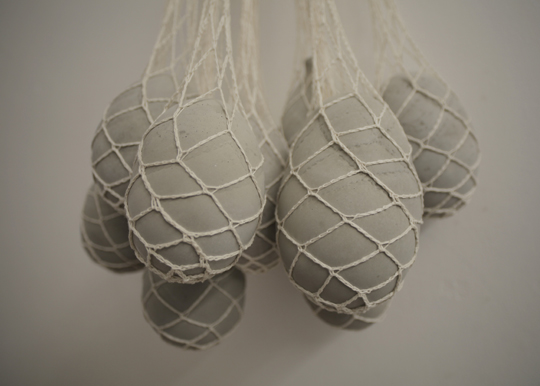
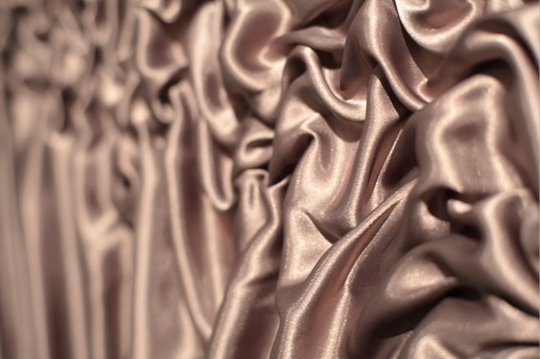
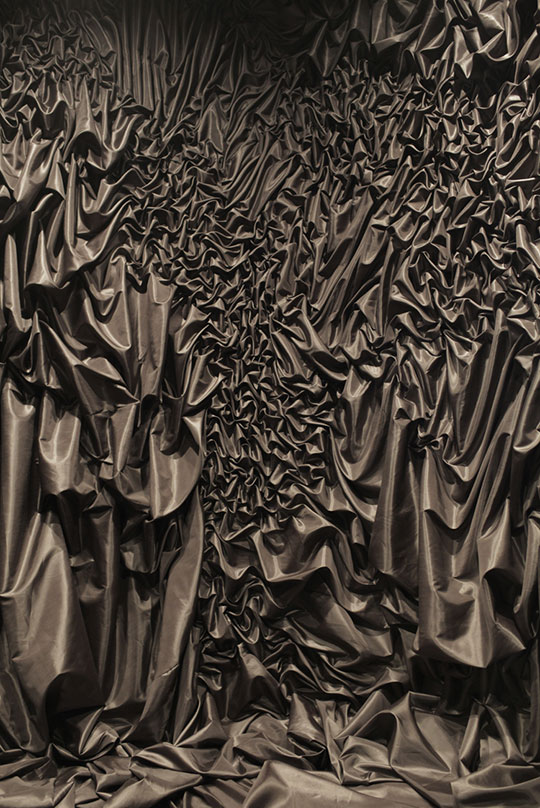
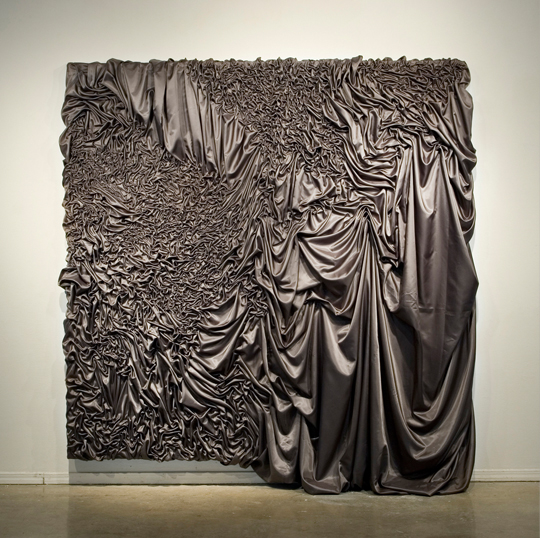
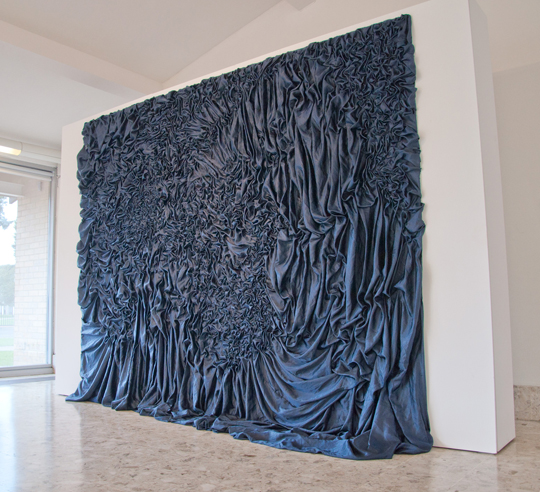
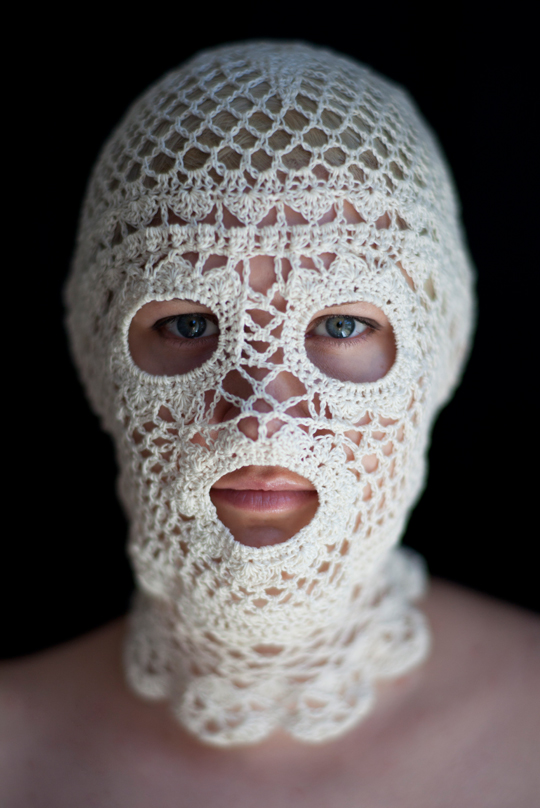
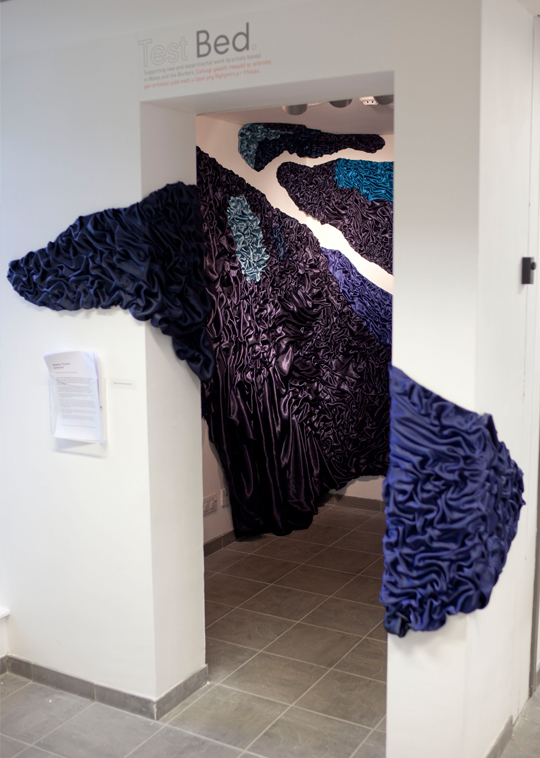
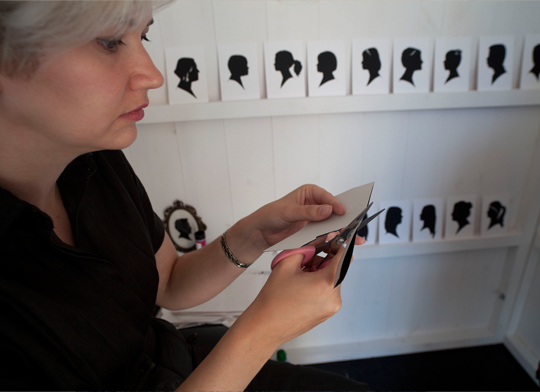
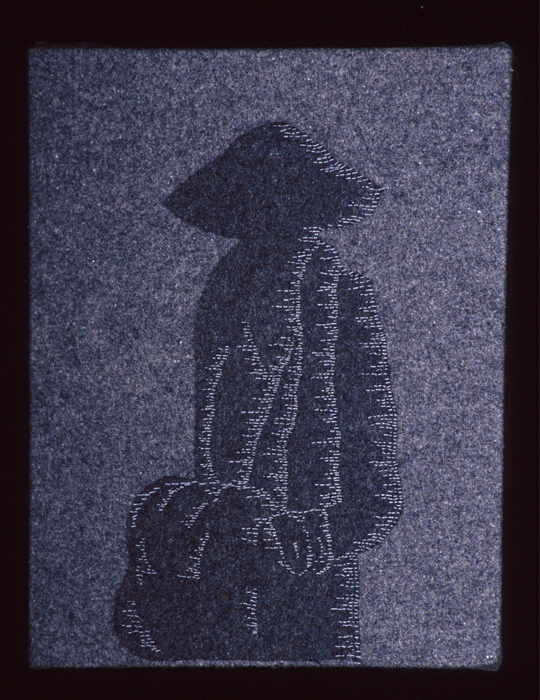
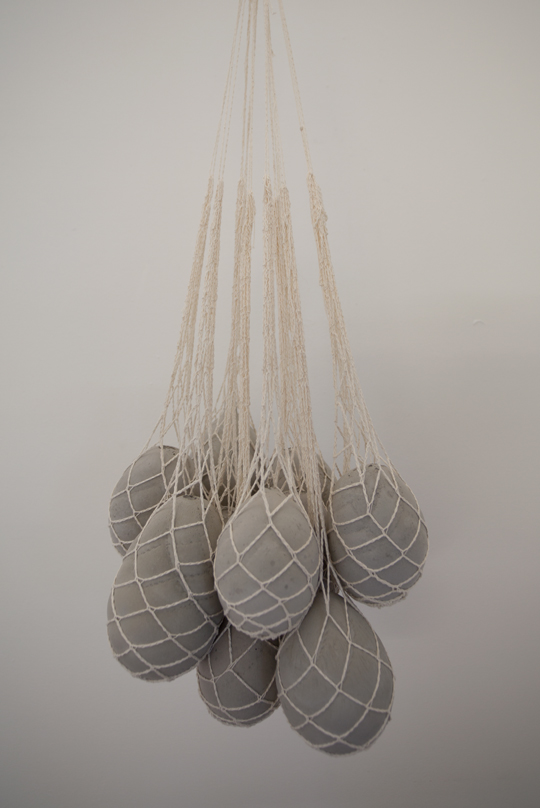















Just beautiful work. I love the texture and sculptural effect Alana has created in her fabrics. I think the use of the satin like material adds to the depth and undulation of the forms, wonderful, thank you for posting this article.